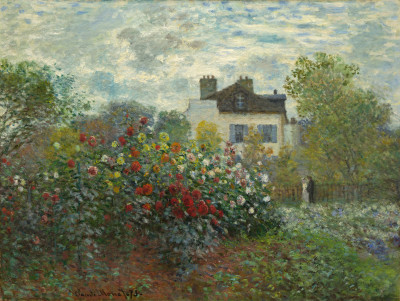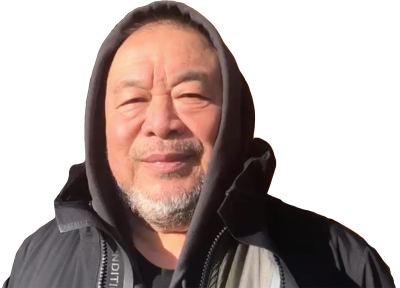11 beautiful art gardens to see before you die
11 beautiful art gardens to see before you die
By Harriet Baker
Published 16 March 2016
From Frida Kahlo’s courtyard to a tropical sculpture park in Brazil, art and the outdoors meet to spectacular effect across the world. With Monet’s paintings of Giverny in our galleries, here are 11 more must-see gardens for art-lovers.
-
1. Casa Azul, Mexico
Casa Azul – or, the “Blue House” due to its brilliant cobalt walls – was the birthplace and home of Frida Kahlo, where she lived throughout her two troubled marriages to the artist Diego Rivera, until her death in 1954. Kahlo painted from its light-filled studio through periods of pain and illness, the result of injuries she sustained in a bus accident at the age of 18. Like many colonial Mexican houses of the period, it’s built around a central courtyard, filled with cacti, fruit trees and indigenous plants, and the couple’s collection of Mexican folk art and archeological artefacts. The wildlife found its way into her work, particularly in her symbolic use of plant and animal imagery.
Museo Frida Kahlo, Del Carmen Coyoacan, Tel: 5554 5999, closed Monday and Tuesday.
-

Frida Kahlo and Diego Rivera in the garden at Casa Azul, Mexico
© Archivo Diego Rivera y Frida Kahlo, Banco de México, Fiduciario en el Fideicomiso relativo a los Museos Diego Rivera y Frida Kahlo
-
2. Trewyn Studio, St Ives
Barbara Hepworth came to live in Cornwall in 1949 with her husband, the artist Ben Nicholson, and their children. From Trewyn Studio, with its sloping garden, she created sculptures in stone and wood, drawing inspiration from the undulating landscape of the coast. “Finding Trewyn was a sort of magic,” she wrote. “Here was a studio, a yard and a garden where I could work in open air and space.” After the artist’s death in a studio fire in 1975, the property was given to the nation and placed in the care of Tate Gallery. Wandering through the small garden among Hepworth’s sculptures, and visiting her studio – still littered with tools and drawings – offers a unique insight into her life and work.
Barbara Hepworth Museum and Sculpture Garden, St Ives, Cornwall, Tel: +44 (0)1736 796 226, open daily.
-

The Garden at the Barbara Hepworth Museum and Sculpture Garden, St Ives, Cornwall, 2011
© Tate, London 2015
-
3. Naoshima, Japan
Japan is famous for its strange and beautiful islands, often dedicated to one particular thing – rabbits, cats or smoking volcanoes. Naoshima is devoted to modern art. Once a sleepy fishing village, the island was transformed in the 1990s by wealthy Japanese publishing magnate, Soichiro Fukutake. He invested in a string of galleries designed by the architect Tadao Ando. Highlights include works by David Hockney RA, a triptych of Monet’s waterlilies, and a museum dedicated to Korean minimalist Lee Ufan. Scattered around the island, on beaches and in clearings on the forested hillsides, are also site-specific artworks by Richard Long RA and Yayoi Kusama.
Benesse Art Site Naoshima, for information on travel and tours.
-

A sculpture by Yayoi Kusama on the island of Naoshima, Japan
Photo: Harriet Baker, Royal Academy of Arts
-
4. Charleston, Sussex
In 1916, the artists Vanessa Bell and Duncan Grant moved from London to a farmhouse near Lewes in Sussex. For the next 50 years, Charleston would become a meeting place for the Bloomsbury group – writers, artists and intellectuals including Virginia Woolf, Roger Fry, John Maynard Keynes and E.M. Forster. While the house was decorated in the Bloomsbury style – with ceramics, textiles and murals inspired by the Post-Impressionists – the garden was designed with the Mediterranean in mind. Dotted with mosaicked paths and Classical sculpture, it both showcased their art and inspired it. In a letter from 1936, Vanessa Bell wrote of “a dithering blaze of flowers and butterflies and apples”, scenes which featured in many of her still life paintings.
Charleston, Firle, East Sussex, Tel: 01323 811626, open March – November.
-

The garden at Charleston, Sussex
Photo: © Penelope Fewster
-
5. Jardin Majorelle, Marrakech
In 1980, Yves Saint Laurent bought Jardin Majorelle to save it from redevelopment. The fashion designer restored it and visited often, until his death in 2008. But the garden was in fact the lifelong work of French painter Jacques Majorelle, who spent 40 years creating his botanical paradise in Marrakech. The son of the Art Nouveau designer Louis Majorelle, the artist became fascinated with Islamic culture, and built a Moorish-style house. Around it, he planted hundreds of varieties of trees – palm, bamboo, coconut, willow – and filled the borders with jasmine, lilies and cacti. He composed the spaces as he might a painting, playing with light and shadow using pools, meandering walkways and curved walls. In the 1930s, he painted the walls of the house “Majorelle blue”, a colour originally found in Moroccan tiles, which he trademarked. “This garden is a momentous task, to which I give myself entirely,” he wrote. “It will take my last years from me and I will fall, exhausted, under its branches, after having given it all my love.“
Jardin Majorelle, Rue Yves Saint Laurent, Marrakech, Tel: +212 (0)5 24 31 30 47, open daily.
-

Jardin Majorelle, Marrakech

Jardin Majorelle, Marrakech

Jardin Majorelle, Marrakech
-
6. Chatsworth House, Derbyshire
Chatsworth House – seat of the Duke of Devonshire and home of the Cavendish family since the 16th century – has played host to art and artists for centuries. The Cavendish art collection spans 4000 years, from ancient Egyptian sculpture and masterpieces by Rembrandt to works by modern artists including Lucian Freud and Edmund de Waal. In the garden, contemporary installations are set against Capability Brown’s 18th-century landscape. For the last ten years, Sotheby’s has hosted Beyond Limits, an annual exhibition of contemporary sculpture, with works by Michael Craig-Martin RA, Damien Hirst, Sarah Lucas and Ai Weiwei.
Chatsworth House, Bakewell, Derbyshire, Tel: 01246 565300. The gardens are closed November – March.
-

Sarah Lucas, 'Kevin', in the grounds of Chatsworth House
Photo: © Sotheby's
-
7. Prospect Cottage, Kent
Derek Jarman’s cottage – a simple wooden structure with a verse from John Donne’s poem The Sun Rising inscribed on one of its walls – sits on a swathe of shingle beach near the nuclear power station of Dungeness. In this inhospitable ground, filmmaker Derek Jarman planted poppies, wild orchids and water lilies, and arranged small circles of flint and pieces of driftwood to resemble standing stones and upright tombs. Having been diagnosed with HIV in 1986, Jarman relocated to Kent and devoted his final years to this unusual landscape, writing about its haunting beauty in his diaries. He was often accompanied by the photographer Howard Sooley, with whom he collaborated to produce his final piece of work, Derek Jarman’s Garden, a record of the garden’s flourishing.
The cottage and garden are privately owned.
-

Derek Jarman's house at Dungeness, Kent

Prospect Cottage, with a verse from John Donne's poem The Sun Rising inscribed on one wall

Derek Jarman's garden at Dungeness, Kent
-
8. Inhotim, Brazil
Opened in 2006 and boasting work by Anish Kapoor RA, Thomas Hirschhorn, Steve McQueen and Yayoi Kusama, Inhotim is Disneyland for culture lovers. Set in 500,000 acres of botanical gardens near Belo Horizonte, south east Brazil, the museum was funded by mining magnate Bernardo Paz and designed by his friend, the landscape artist Roberto Burle Marx. Exploring tropical sculpture gardens and shaded pavilions, visitors at Inhotim are encouraged to interact with the artworks, such as Olafur Eliasson’s kaleidoscopic telescope.
Inhotim, Brumadinho, Brazil, Tel: +55 31 3571-9700, open daily.
-

Inhotim Garden
Photo: © Ricardo Mallaco
-
9. Little Sparta, Lanarkshire
For Ian Hamilton Finlay, the garden stood for artistic freedom, protected from the bureaucracy of the outside world. Having established himself as a poet and sculptor in the 1950s and 60s, Finlay retreated from society and made a home for himself at Stonypath Farm in the Pentland Hills in Scotland. He began to transform and shape the environment around him, creating ponds and planting trees, within which he set sundials, sculptures, temples and inscriptions. Finlay’s garden is both a political statement (it takes it name from an independent state in Ancient Greece) and an artistic endeavour, blending landscape design with sculpture and poetry.
Little Sparta, South Lanarkshire, Scotland, open Wednesday, Friday and Sunday afternoons from June – September.
-

The Temple of Apollo at Ian Hamilton Finlay's garden Little Sparta at Dunsyre, Scotland

Ian Hamilton Finlay's garden, Little Sparta, in Lanarkshire

Ian Hamilton Finlay's garden Little Sparta at Dunsyre, Scotland
-
10. The Peggy Guggenheim Collection, Venice
Lapped by the waters of Venice’s Grand Canal is the Peggy Guggenheim Collection. An 18th century palace and the home of the American collector for 30 years, it houses an impressive collection of Cubist, Surrealist and Abstract Expressionist works. Just outside, a series of shaded patios showcases sculpture by Hans Arp, Alberto Giacometti, Barbara Hepworth, Mimmo Paladino and Yoko Ono, among others. Guggenheim moved to Venice in 1946 after her divorce from the German painter Max Ernst. The granddaughter of the mining millionaire and philanthropist Meyer Guggenheim (and niece of Soloman), Peggy had begun to collect art in the 1920s, supporting her friends – including Man Ray and Marcel Duchamp – who were then penniless in Paris. By the time she moved to Venice, she turned her attention to showing her collection to the public.
Peggy Guggenheim Collection, Palazzo Venier dei Leoni, Venice, Tel: +39 041 2405 411, closed Tuesdays.
-

The Nasher Sculpture Garden of the Peggy Guggenheim Collection, Venice
© Peggy Guggenheim Collection, Nasher Sculpture Garden, Venice. Ph. David Heald
-
11. Yorkshire Sculpture Park, Wakefield
Since 1977, the Yorkshire Sculpture Park has been a centre for modern art, with works from artists including Henry Moore, Elisabeth Frink, Andy Goldsworthy and Ai Weiwei scattered throughout 500 acres of rolling land. For those with stamina, YSP can be enjoyed alongside the Hepworth Wakefield, the riverside gallery designed by David Chipperfield RA, and the Henry Moore Institute in Leeds – dubbed the “Yorkshire Triangle.”
Yorkshire Sculpture Park, Wakefield, Yorkshire, Tel: +44 (0)1924 832631, open daily.
-

Ai Weiwei, Iron Tree, 2013

James Turrell, Skyspace in the Deer Shelter, 2006

Sophie Ryder, Sitting, 2007
-
Been to other beautiful art-related gardens you’d recommend? Tell us on below or on Twitter @royalacademy
Painting the Modern Garden: Monet to Matisse is in the Main Galleries of Burlington House until 20 April.






















